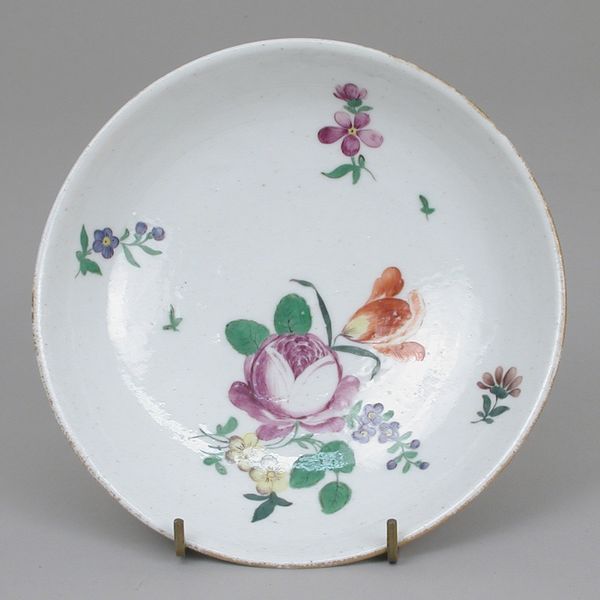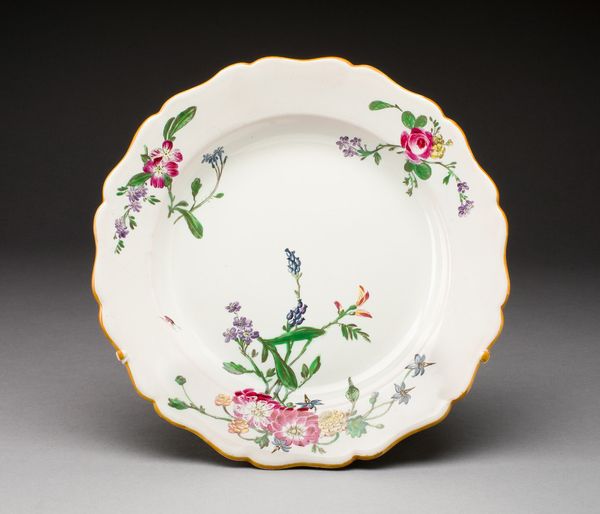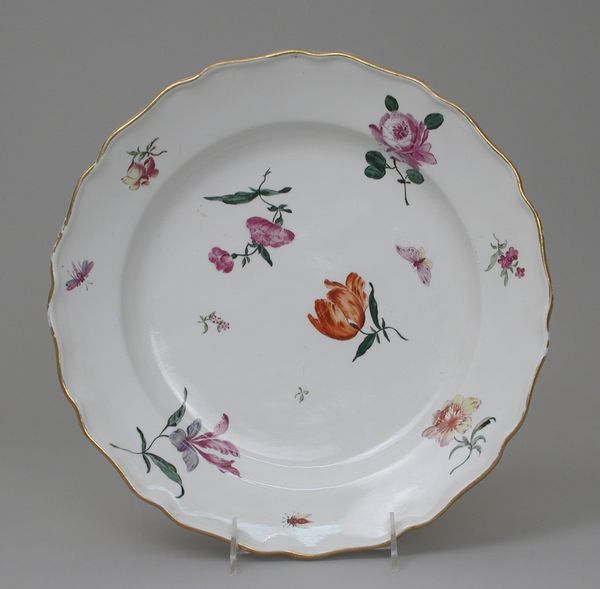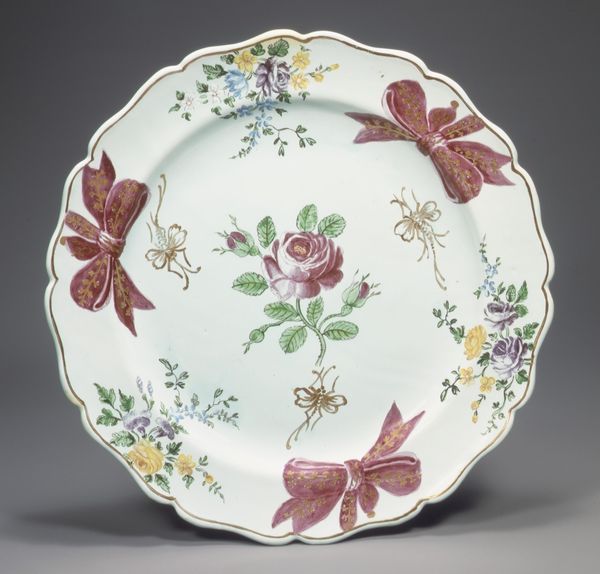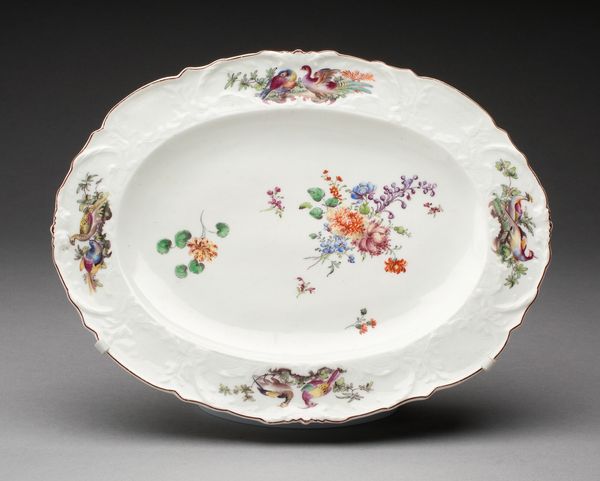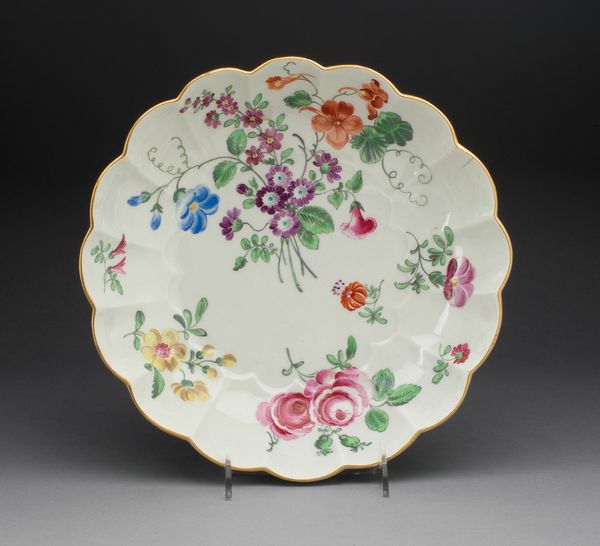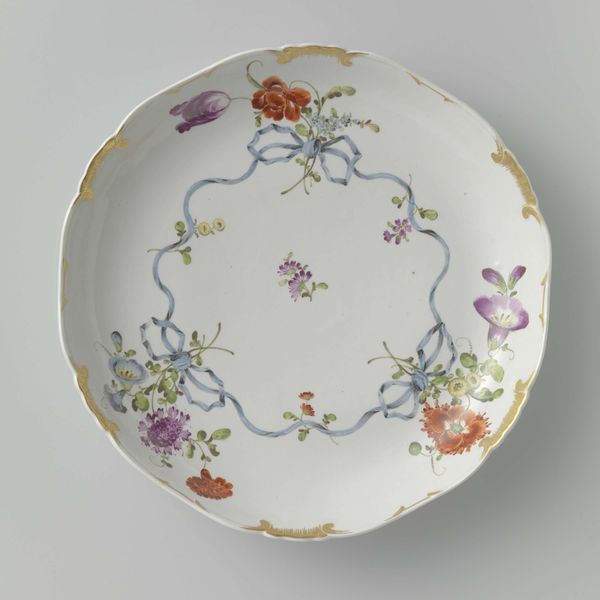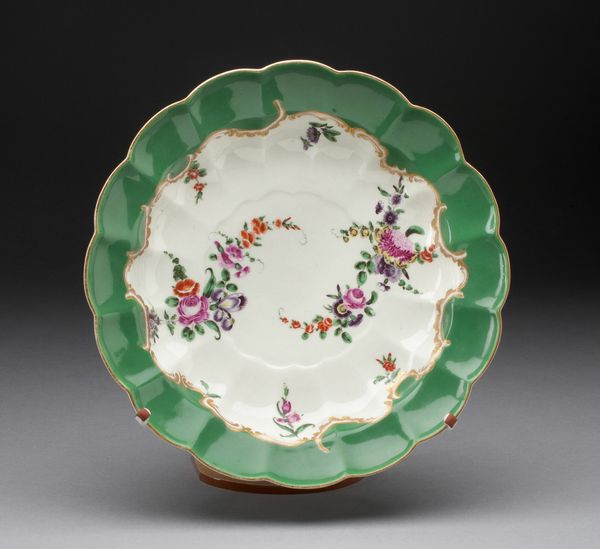
painting, ceramic, porcelain
#
painting
#
ceramic
#
porcelain
#
ceramic
#
decorative-art
#
rococo
Dimensions: 1 3/8 x 9 5/8 x 9 5/8 in. (3.49 x 24.45 x 24.45 cm) (outer frame)
Copyright: Public Domain
Curator: This delightful porcelain plate was crafted by Paul Antoine Hannong, likely sometime between 1760 and 1780. It’s part of the decorative arts collection at the Minneapolis Institute of Art. Editor: It's utterly charming! At first glance, I'm struck by the dreamy quality of the painted flowers. They seem both vibrant and delicate. It’s not simply utilitarian, is it? This was meant to be enjoyed, savored. Curator: Absolutely. Hannong's workshop was at the forefront of the Rococo style, embracing lightness, elegance, and a celebration of natural forms, often inspired by botanical studies from the period. Decorative plates like this became emblems of social status. Displaying porcelain signalled refinement and wealth. Editor: It does whisper of drawing rooms and tea parties, doesn’t it? The floral arrangement is simple but sophisticated—a deep purple carnation as the focal point, balanced by those smaller, less defined blossoms dotted around the rim. I feel the plate vibrates, radiating warmth in its simplicity. How does it fit within its social context? Curator: During this period, the decorative arts were evolving significantly. Hannong was competing with other porcelain producers, especially Sèvres, and using nature to demonstrate sophisticated tastes. These pieces, originally, signaled France’s economic power. Editor: Fascinating! To think a simple flower arrangement is a microcosm of political power. I find myself contemplating who touched it last. Some elegant 18th-century hand, perhaps? The delicate curves and scalloped edge are a pure invitation to delight. Curator: And let us consider it as a symbol of its time, from the labor involved in mining the raw materials to the training for painters who delicately worked these pieces. Every line is a consequence of someone’s job within a system of manufacture and taste. Editor: Thinking of the labor adds weight, literally, to my appreciation. It's a connection, isn't it? To the artistry and craft and to the broader society it existed within. The little crack lines give me chills. Curator: Exactly. And that tension between the delicate object and complex system that is still reflected in museum curation, in what we deem valuable or beautiful, in what’s displayed and what’s hidden away… Editor: A perfect bite-sized moment of beauty with a hidden history! The past is present with me, especially while thinking of who once enjoyed its charm long ago, perhaps with a warm drink, a pastry, or two, while I was only daydreaming about it!
Comments
No comments
Be the first to comment and join the conversation on the ultimate creative platform.



